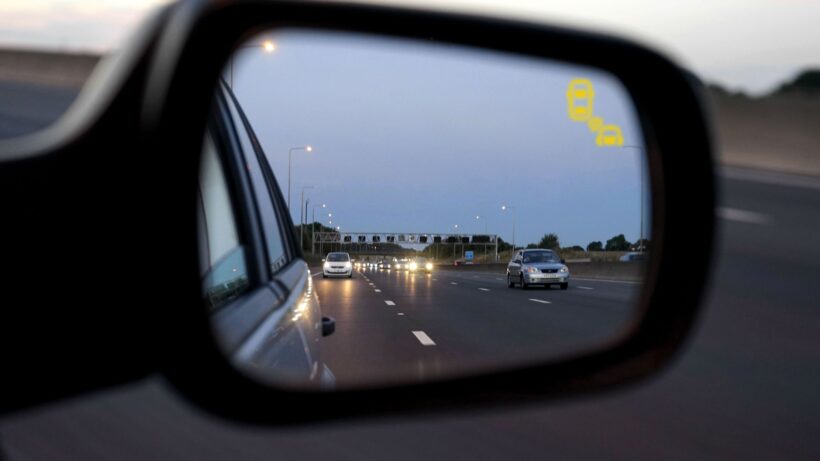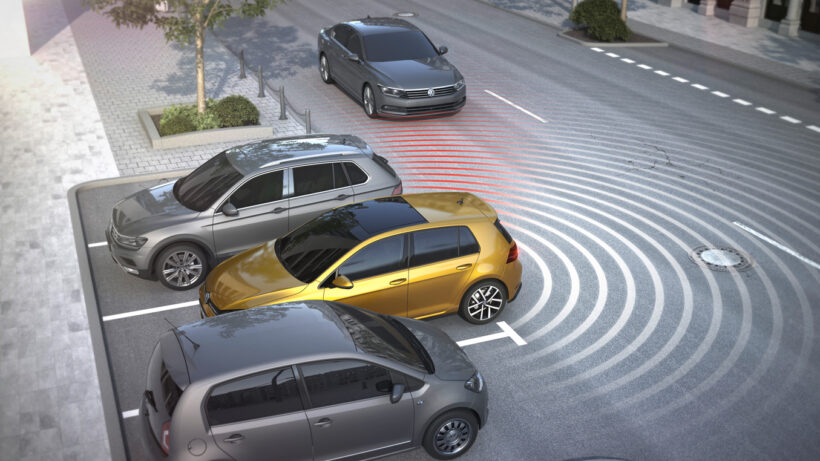The number of features and technologies in today’s cars has grown by leaps and bounds in the last few years. And car-safety features are no exception. Most modern cars come equipped with different safety features and technologies to ensure maximum safety while you’re on the road. However, not all car-safety features are created the same. There are government-mandated safety features like airbags, seatbelts, traction control, and backup cameras. All vehicles must be equipped with these standard safety features.
There’s a blizzard of additional safety features that provide increased protection for drivers and their passengers. Ensuring your car has tinted windows and is equipped with safety features can reduce your risk of getting into an accident. Check out the wide variety of window tint options from Van Isle Glass that you can choose for your car. Here are some of the best latest safety features to look out for when buying a new car:
1. Intersection-Scanning AEB

The Autonomous Emergency Braking (AEB) system is one of the most essential safety features in modern-day cars. An AEB system relies on camera or radar-based sensors to detect other vehicles and objects in your car’s path. Once it identifies objects in the vehicle’s path, it automatically applies brakes to prevent a collision from happening. Some AEB systems are designed to bring the car to a complete stop while others only slow it down, reducing the impact if you don’t apply the brakes.
Most modern cars come fitted with standard AEB systems, while others have a more specific version of AEB system referred to as intersection-scanning AEB. This version of the autonomous emergency braking system detects oncoming vehicles at intersections and notifies you of a potential car crash.
2. Center Airbags
While front, side, and curtain airbags have been a standard safety feature on every car for years, nearly every car today comes fitted with center airbags. Initially, these airbags were designed to deploy from the car’s rear center seat but today, there’s also a front-center airbag that deploys towards the side of the driver’s seat. Buying a car with center airbags can help provide cushioning in side impacts and rollover crashes, preventing your heads from colliding during an accident.
3. Night Vision
Night vision is a feature mostly found in specific luxury car models but it’s quickly becoming a standard feature in nearly every modern car. New cars come equipped with either passive or active night vision systems. Passive night vision systems rely on thermographic cameras that watch for animals, people, and vehicles that cannot be seen easily in the dark. The system displays the image of what’s in front of your car’s infotainment screen. The system detects the heat emitted by the car, person, or animal and displays it as black and white images on the monitor.
On the other hand, passive night vision systems use infrared light to detect animate objects hidden in the dark. The system only detects objects that emit heat and displays the images on your car’s monitor. Some systems even give an audible or visual alert once it detects an object.
4. Blind Spot Detection

When you’re driving, cars behind you or on an adjacent road are usually in a blind spot, which often increases the risk of a potential crash if you change lanes or decide to turn. A blind-spot monitoring system helps alert you when you’re going in your blind spot. While all vehicles can benefit from using these devices, they are crucial for trucks and larger vehicles, which is why fleet managers often partner up with vehicle safety specialists such as Traffic Angel to help them choose the best blind spot detection solution The system uses radar and ultrasonic sensors found on your car’s rear bumper to detect cars in adjacent lanes. The alerts are often visual and sound notifications and usually become louder or brighter if you signal to change lanes. The latest blind spot detection systems even apply brakes or control the steering to prevent a crash from occurring.
5. Safety Exit Assist
The safety exit assist is another car safety feature you should consider having on your car. This car-safety feature helps prevent car doors from opening while there are oncoming vehicles from behind. This feature serves as an extension of the blind spot detection system and is most helpful for parents with young kids.
Having the safety exit assist feature helps ensure the car’s safety lock is activated, so your kids can’t open the doors while you’re on the road. This helps prevent accidents while you’re driving with the kids in the rear seats, protecting them from potential harm.
6. Lane-Keeping Assist and Lane Departure Warning
Another safety feature to have in your car is the lane-keeping assist system. A lane-keeping assist feature helps steer your car back into your current lane when you change a lane without activating the turn signal. This system relies on a forward-pointed camera to detect when your car swerves beyond its lane, initiating slight braking or making steering adjustments. This ensures your car stays in line with the stripes’ lane-markings on the road, preventing your car from colliding with other vehicles.
Unlike the lane-keeping assist, some cars come fitted with a lane departure warning safety feature that alerts you whenever you deviate from your lane. The notifications come in the form of a visual cue, a beep, or a vibration. This way, you get to steer your car back to its lane and avoid a potential collision.
7. Rear Cross-Traffic Alert (RCTW)

Like the blind spot monitoring system, a rear cross-traffic alert system uses ultrasonic and radar sensors fitted on a car’s rear bumper. It can also use a backup camera. This car-safety feature gets activated while reversing out of a driveway, parking lot, or backing into the path of crossing traffic. The system alerts you of any oncoming from either side of the path you’re backing towards. The alert can be tactile, visual, or audible. Some rear cross-traffic alert systems automatically apply brakes to stop your car, so you don’t reverse the car and cause an accident.
8. Adaptive Cruise Control (ACC)
Adaptive cruise control is another cutting-edge car-safety feature found on most modern cars. The adaptive cruise control system uses lasers, cameras, and radar sensors to monitor nearby traffic and automatically control the braking and acceleration of your car. You engage it by pressing the button on the steering wheel and disengage it by applying the brakes.
When engaged, the adaptive cruise control system automatically adjusts the speed of your car to match that of the surrounding vehicles. It can also bring your car to a complete stop whenever necessary to keep a safe distance from the vehicle ahead of you. Some systems can resume motion automatically while others require you to press on the accelerator to get back in motion.
Endnote
Today’s cars come packed with many different safety features that help protect you and other people in your car while on the road. Refer to the above list when shopping for a car to ensure it comes equipped with the latest safety features to help you stay safe behind the wheel. However, you shouldn’t rely on safety features alone, consider taking a driver safety class to hone your skills and ensure you always drive safely.

